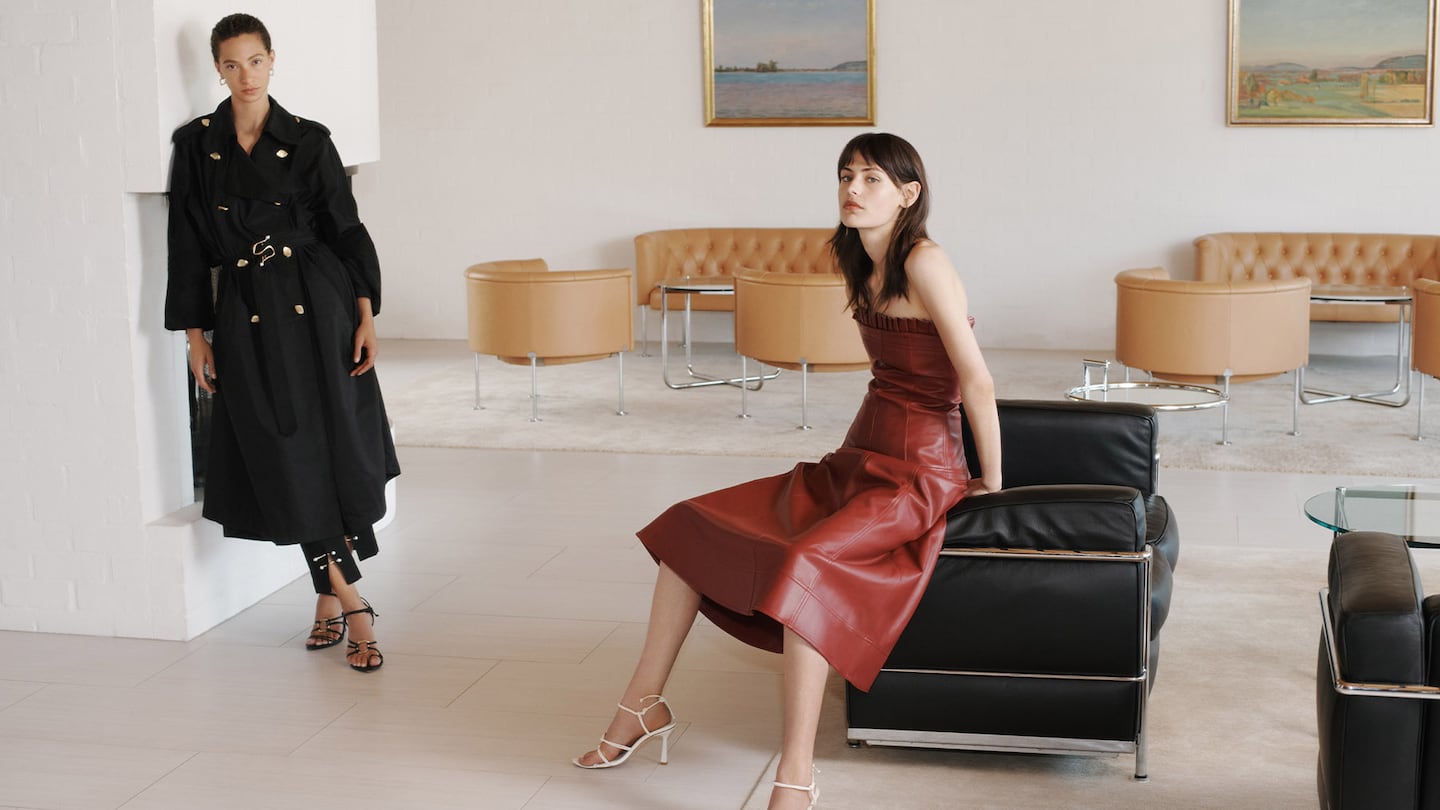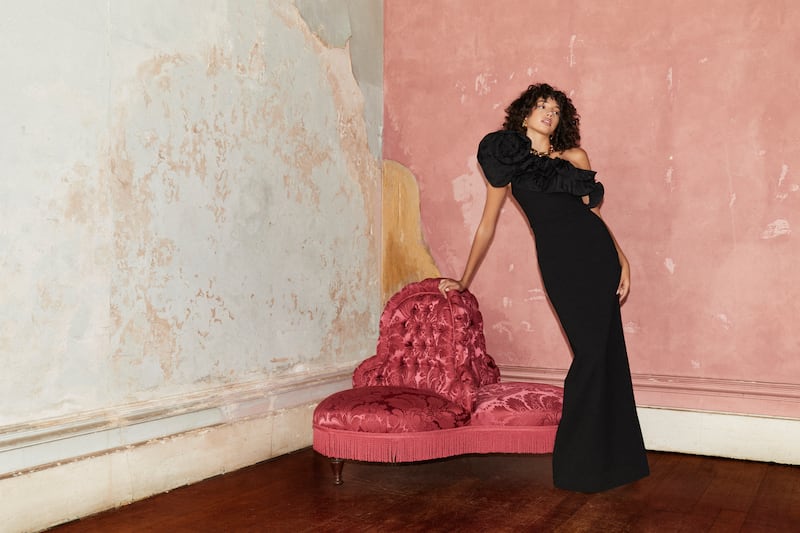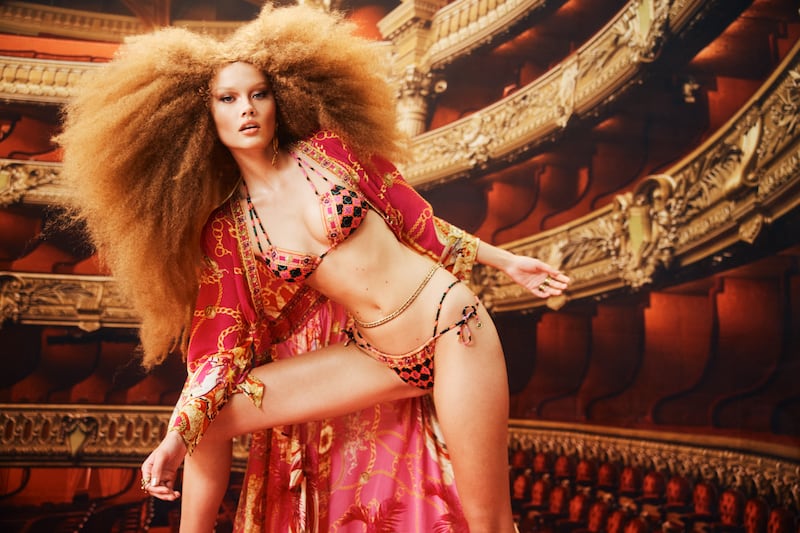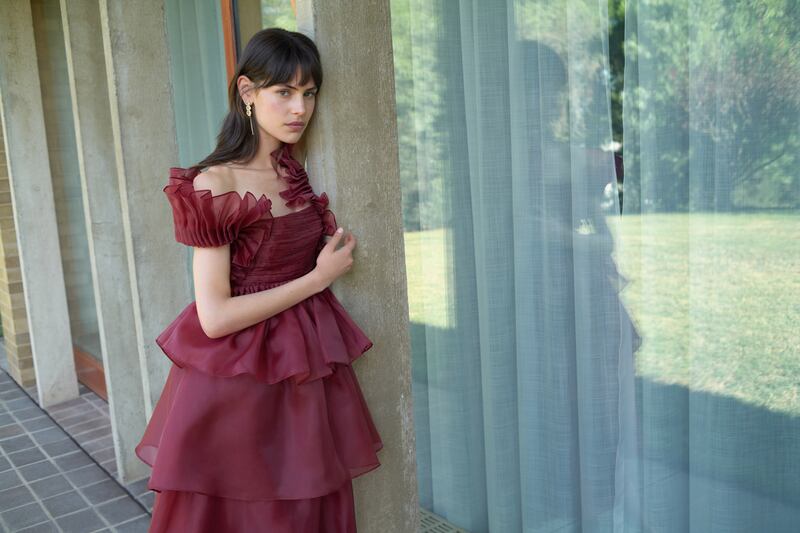
The Business of Fashion
Agenda-setting intelligence, analysis and advice for the global fashion community.

Agenda-setting intelligence, analysis and advice for the global fashion community.

When Australian Fashion Week kicks off today (May 15) in Sydney, emerging brands such as Alix Higgins and Ngali will join established names like Bianca Spender and Bec & Bridge on the catwalks. While designers stop short of using the word ‘optimistic’ to describe the current mood, things are beginning to stabilise after a turbulent few years.
The IMG-owned event has long been a way for Australian brands to gauge international interest and this season is expected to be the start of a post-pandemic comeback of overseas buyers and press. But for designers who want to truly go global, it is often what happens after fashion week that counts. For Australians, that means a long road peppered with more obstacles than their peers encounter in the northern hemisphere.
The success of Sydney-based Zimmermann is an example of what can be achieved on the world stage in spite of those obstacles. After 32 years in business, the brand boasts 56 stores across the globe (35 of which are outside Australia) and investment from Italian backers Style Capital, along with offices and showrooms in New York and Paris.
Australian Fashion Week founder Simon Lock describes Zimmermann founders Nicky and Simone Zimmermann as having had a “halo effect” on the local industry.
ADVERTISEMENT
“They’ve shown the world it’s possible to build a mega-brand from Australia. They’ve done more to promote Australian fashion than anything in the last 30 years,” said Lock, who now serves as chief executive of Ordre, an online wholesale platform he founded in 2014, four years after leaving Australian Fashion Week.
Many have since followed in Zimmermann’s footsteps though none have created international businesses on their scale. Scanlan Theodore, Carla Zampatti, Camilla and Marc and heritage high street label Cue are among those with a strong mono-brand presence in all major Australian cities; Maticevski and Alex Perry have businesses that are skewed wildly in favour of international sales via wholesale. All have been in operation for over two decades.

Another wave of Australians included designers like Dion Lee who moved from Sydney to New York, where he opened his first international store. A few younger brands, like Alemais and P.E Nation, have also achieved wide global wholesale reach in less than a decade. But success can be subjective and not every local brand expanding overseas has the same buzz or insiders’ recognition.
Australia’s latest offering to international markets is what some might characterise as the “quiet giants” of the advanced contemporary and accessible luxury categories.
Camilla, Aje and Rebecca Vallance are all at different sizes and points in their journey and have been in business between 13 and 18 years. They already have wholesale accounts with a rollcall of the world’s leading retailers, such as Saks Fifth Avenue, Net-a-Porter, Neiman Marcus and Ounass but are now looking to expand their global footprint through mono-brand stores.
For Bridget Veals, general manager of womenswear, footwear and accessories at Australian department store David Jones, which stocks all three brands, the next step is almost overdue. “All three have been slower to [open stores internationally] than I would have expected, but maybe that’s because they’ve got such a strong Australian footprint.”
“They’re three hugely different brands for us [but all] very feminine brands [that]… make women look good,” added Veals, explaining their appeal in the domestic market.
Camilla, Aje and Rebecca Vallance each declined to disclose financial results, but their collective activity overseas suggests they are growing fast.
ADVERTISEMENT
For its part, Camilla has 264 wholesales accounts spanning 65 countries on top of its 25 Australian stores. International sales now account for around 40 percent of total sales, with the US the top-selling market.
Despite the proximity of Asia, and the focus of other Australian export industries on that region, particularly China, Australian fashion brands have traditionally forged a path to the US and Europe before turning their attention there.
Initially a resort brand, Camilla now includes print-focused ready-to-wear and homewares, and has two US stores, one in Miami, Florida, and another in Costa Mesa, California. Founder Camilla Franks recently signed leases in Bal Harbour, Florida and Shorthills, New Jersey, set to open in the next Australian financial year. “We are actively scouting for further opportunities,” she said.
In December, the brand took minority investment from Western Australian mining offshoot Tattarang, which also owns heritage Australian brand RM Williams.
Rebecca Vallance and Aje are both in discussion with leasing agents in several international locations, but no leases have been signed yet.
Aje was founded by Adrian Norris and Edwina Forest, whose parent company Aje Collective has almost 600 staff and encompasses activewear line Aje Athletica and wellness and skin care line Ikkari. Aje alone now has 75 overseas wholesale accounts.
International sales currently account for around 20 percent of the Aje business but 80 percent of that is in the rapidly growing US market. Norris says that he has so far held off opening a store there due to human resource constraints. “I knew if I didn’t have enough team to manage it, then the team managing the Australian business would be distracted by one store. And one store [overseas] can’t distract 41 other stores [in Australia].”

When the time is right to open, however, Norris said he is looking beyond just the fashion capitals of New York and Los Angeles to cities in Texas and Florida where the brand has already proved popular via e-commerce channels.
ADVERTISEMENT
Rebecca Vallance has five Australian stores between Sydney and Melbourne, with more opening across the country in the next 12 months. Within that timeframe, she hopes to have her first international store operating, and is actively looking at sites in New York, Miami and London.
Founder Rebecca Vallance-Gasan launched her label focused on dresses, suiting and swimwear in London, before returning to her native Australia 10 years ago. Her international business already outweighs domestic, 57 percent of total sales going overseas. The figure is higher for wholesale.
“We’ve had these incredible international wholesale partners for 13 years and now we’re wanting to showcase the full collections in our own stores,” says Vallance-Gasan.
But it’s hardly open season in the US and Europe. All three Australian contenders are facing competition from a range of local incumbents ranging from French contemporary group SCMP’s Sandro and Maje to rapidly growing American accessible luxury brands like Staud and Loeffler Randall.
The Middle East is another market that is increasingly valuable to Australian brands, particularly those with an elevated, occasion aesthetic, something that Rebecca Vallance, Aje and Camilla all cater to.
“The Middle East is one of our fastest-growing markets, that’s where we are now putting additional focus and attention,” says Franks. “[But] we must also always recognise the importance of being ‘local’ as well as global. To do things well you need to pay more than lip service to different cultural issues, payment types, influencer community, logistics preferences, language and ways of wearing.”
Camilla recently offered an Eid edit for the region during Ramadan and says there is much more to do. “We are [yet] to translate our website [due next year] and offer the payment on delivery option, which customers expect from their preferred suppliers.”
Paradoxically, it is often the markets closest to Australia that local ‘quiet giants’ find the hardest to crack. Each brand counts e-commerce channels or physical stockists in Southeast Asia, particularly Singapore, but Franks says the wider Asia region is “still relatively unexplored” for Camilla, and that it “provides our next mid-term opportunity.”
While none of the three brands currently has stockists in Japan, the market remains a good one for other Australian brands, particularly those with a solid heritage and sustainability focus, such as Helen Kaminski and Lee Mathews.
China is a difficult proposition for some Australians, despite the strength of spending from tourists to Australia and the importance of the mainland market for most brands around the world.
“If you had asked me five years ago, I would have said, China is where everyone is going,” says Norris. “Everyone was talking about how to get a partner in China, how do you open 400 stores across China? That conversation isn’t happening at the moment.”
In 2016, Alice McCall was the first Australian designer known to open a store there, in Dalian, northeast China, with a local partner; it quietly closed within a few years. In January 2022, Zimmermann opened a store in Shanghai and more recently in Shenzhen, to date the only other Australian fashion brand known to have opened in the country.
Chinese e-commerce channels are still slow to be developed by Australian brands, although some are engaging via Alibaba’s Tmall. Swimwear label Seafolly and mid-range fashion label C/meo Collective were among the first but that was only around five years ago.
“[China] should be the first port of call and it’s always the last,” says Lock. “I think historically, Australian designers have found [mainland] China too difficult, because it is. Hong Kong, Singapore — easy. You’ve got Lane Crawford, Club 21 — they’re like dealing with David Jones. But no-one gets big in Singapore first and makes it to the world.”
Building mutually trustworthy relations with partners often takes more time in China than other markets and requires access to a special relationship culture known as ‘guanxi’. Speaking on the condition of anonymity, one industry insider said that the pace is “ten times faster” in China, and that the slower pace in international markets like Australia can frustrate Chinese partners who are looking to scale the China business faster than brands can accommodate.
However, another Chinese source based in Australia who asked not to be named, said that some Australian brands are growing in popularity in tier-one Chinese cities. They suggested that partnering with multi-brand retailers was the most suitable way to enter the Chinese market, rather than going straight to Tmall or using WeChat stores, due to the significant investment required to make the brand visible in a crowded marketplace.
The tyranny of distance is real. Australia is geographically challenged from both local and international perspectives: it takes less time to fly across Europe from London to Istanbul than it does to fly from Perth to Sydney, and an average flight time to Europe from Sydney is upwards of 20 hours.
A population of only 26 million also means a small local marketplace. The combination makes international distribution and expansion both difficult and desirable.
“We are really pressuring government to help us,” says Leila Naja Hibri, chief executive of the Australian Fashion Council (AFC). “We need to do with Australian fashion what they did with Australian wine, they gave support in a systematic way.”
A 2021 report commissioned by the AFC found that the fashion industry generated AUD 27.2 billion ($18.03 billion] for the economy, of which AUD 7.2 billion ($4.77 billion] was in export revenue. This figure is more than the export value of Australian beer and wine, a segment that has long received governmental subsidies and backing.
While frontline support from the AFC has been unveiled in the form of a new Australian Fashion trademark and a first-ever global marketing campaign, there are other initiatives it has been developing behind the scenes to improve export outcomes for Australian brands and remain competitively priced in market.
“We are working closely with DFAT [the Department of Foreign Affairs and Trade] as part of the ongoing negotiation for the Australia-European Union Free Trade Agreement,” said Naja Hibri. “It’s really important to ensure that the agreement is fair and balanced, and that a single country like Australia is not expected to meet the same country of origin criteria as 27 European nations combined.”

This includes addressing the double transformation rule, in which to receive preferential duty treatment at least two parts of the manufacturing process (of yarn, fabric or sewing) must take place within the same region. Australia has virtually no yarn or fabric mills and limited on-shore manufacturing. So those few brands that are manufacturing in Australia will be at a disadvantage.
“We also worked closely with DFAT while they were negotiating the UK-Australia Free Trade Agreement and were able to obtain favourable concessions to the definition of ‘Australian-origin’ in relation to specific textiles and garments categories.”
Lock suggests that some of the challenges Australian brands faced 20 years ago when trying to build a global business are still relevant today. “The first obstacle to overcome is breaking into that ecosystem… which very much revolves around the northern hemisphere [norms] and the relationships that that develops.”
Showing up physically in target markets is still “everything, unfortunately,” says Lock, despite the pandemic-induced pivot to digital business and interactions.
Vallance-Gasan agrees. “If you want to be an international brand you’ve got to be international [yourself]. The biggest hurdle is maintaining control from a distance alongside the time zone challenges.”
“That’s why it’s been super important for me to travel to each market and show our collection, meet with the buyers in person and establish those relationships. I spent nine out of 12 months of my year travelling and connecting with our partners to ensure that the distance isn’t an obstacle,” she added.
Decades ago, when Australian Fashion Week began, inverse seasonality was the main issue for Australian brands wanting to sell globally. While Lock believes that it is now “irrelevant” due to the largely trans-seasonal nature of Australian design, other industry leaders say it still needs to be addressed.
“The biggest challenge I see with most Australian brands in the American markets is related to seasonality,” said Kelly Shen, dress collections buyer for Saks Fifth Avenue. “Since Covid, I find that people are even more ‘buy now wear now’ than they were before so the challenge with Australian brands is lining up the deliveries so that it fits the American market.”
Some Australian brands, such as Zimmermann, have already aligned with the northern hemisphere seasons. But the majority still put the home market first, and then tweak their international offerings where necessary.
“There is always a point in the business when you go, OK, will I flip?” said Norris. “But our design and… merchandise teams are really aware of that [issue], so we will be creating supplementary pieces that will go into [the northern] hemisphere until we get to that [next] stage.”
Presenting back home on the runway continues to appeal to Aje, which will be the only one of the three ‘quiet giants’ to show at this week’s Australian Fashion Week. But Norris can likely speak for them all as to his hopes for overseas expansion: “I have very big dreams. How long’s a piece of string?”
At a time when government funding is scarce elsewhere, Australia is injecting more than $380 million into its fashion and design industries. Is the money being well spent?
Amidst a challenged and changing Australian fashion landscape, the search for unique designer talent returned some promising positive results, says BoF columnist Susanna Lau.
Local streetwear brands, festivals and stores selling major global labels remain relatively small but the country’s community of hypebeasts and sneakerheads is growing fast.
This week’s round-up of global markets fashion business news also features Senegalese investors, an Indian menswear giant and workers’ rights in Myanmar.
Though e-commerce reshaped retailing in the US and Europe even before the pandemic, a confluence of economic, financial and logistical circumstances kept the South American nation insulated from the trend until later.
This week’s round-up of global markets fashion business news also features Korean shopping app Ably, Kenya’s second-hand clothing trade and the EU’s bid to curb forced labour in Chinese cotton.